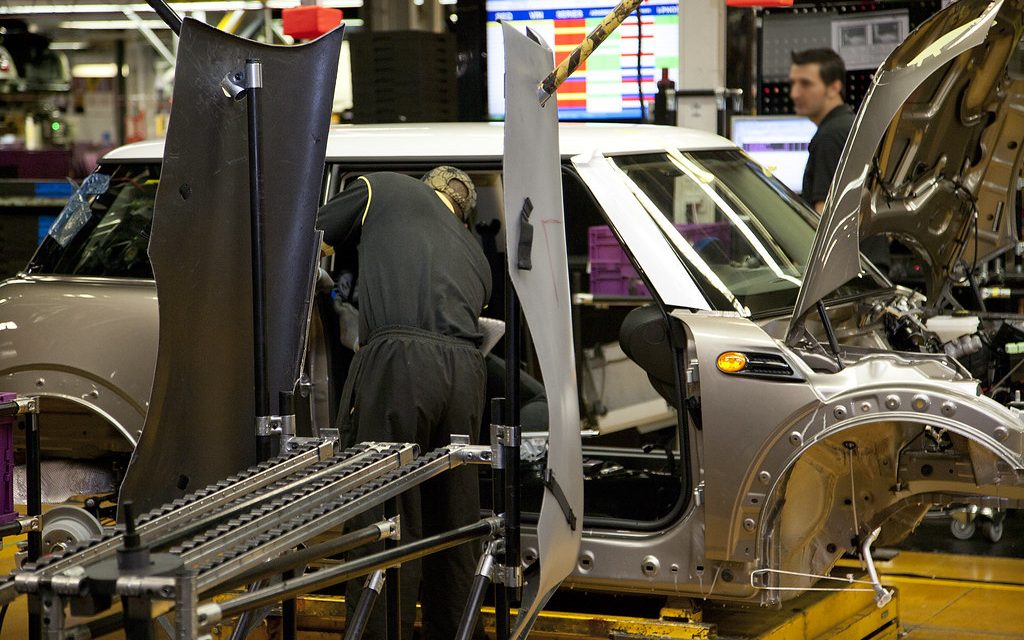Dublin – The “Automotive Blockchain Market: Global Industry Trends, Share, Size, Growth, Opportunity and Forecast 2022-2027” report has been added to ResearchAndMarkets.com’s offering.
The global automotive blockchain market reached a value of US$ 420.1 Million in 2021. Looking forward, the publisher expects the market to reach a value of US$ 2,236.3 Million by 2027, exhibiting a CAGR of 32.14% during 2021-2027. Keeping in mind the uncertainties of COVID-19, we are continuously tracking and evaluating the direct as well as the indirect influence of the pandemic. These insights are included in the report as a major market contributor.
Automotive blockchain refers to a decentralized ledger used to store, keep track and monitor data related to automobiles. It is linked through the means of cryptography, which focuses on transforming data into formats unrecognized by unauthorized users to provide immediate, shared, and transparent information.
Automotive blockchain offers multiple benefits, including fast warranty claim processing, easy-to-track operations, enhanced smart contracts and car sales, tamper-proof transaction records, improved transparency, instant traceability, and reduced payment exchange fees. Apart from this, it is widely used to streamline procedures, store unique data, verify and secure vehicle mileages and curb fraudulent activities.
Automotive Blockchain Market Trends:
The growing number of vehicle manufacturing processes across the globe is creating a positive outlook for the market. Automotive blockchain is widely used to enhance supply chain management and help original equipment manufacturers (OEMs) follow up on automotive parts and components regarding their latest modifications, thus aiding in identifying counterfeit products and ensuring high-quality products and services to consumers.
In line with this, the increasing investments in autonomous vehicles and mobility services, such as vehicle leasing, rental, sharing, hailing, and pooling, have facilitated the demand for automotive blockchain to allow car rental companies to monitor the maintenance, cleaning, rent, and user data of registered vehicles.
This, in turn, is supporting the market growth. Apart from this, various advancements in technologies, such as the integration of the Internet of Things (IoT) and artificial intelligence (AI) with connected devices, to track, process, authenticate and exchange transaction systems are providing an impetus to the market growth. Other factors, including the increasing focus on reducing data leaks and manipulations, the rising need for faster transactions and extensive research and development (R&D) activities, are anticipated to drive the market further toward growth.
Competitive Landscape:
The competitive landscape of the industry has also been examined along with the profiles of the key players being Accenture plc, BigchainDB GmbH, carVertical, ConsenSys, GemOS, HCL Technologies Limited (HCL Enterprise), International Business Machines Corporation, Microsoft Corporation, NXM Labs Inc., ShiftMobility Inc. and Tech Mahindra Limited.
Key Questions Answered in This Report:
- How has the global automotive blockchain market performed so far and how will it perform in the coming years?
- What has been the impact of COVID-19 on the global automotive blockchain market?
- What are the key regional markets?
- What is the breakup of the market based on the type?
- What is the breakup of the market based on the provider?
- What is the breakup of the market based on the mobility type?
- What is the breakup of the market based on the application?
- What is the breakup of the market based on the end user?
- What are the various stages in the value chain of the industry?
- What are the key driving factors and challenges in the industry?
- What is the structure of the global automotive blockchain market and who are the key players?
- What is the degree of competition in the industry?
Key Topics Covered:
1 Preface
2 Scope and Methodology
3 Executive Summary
4 Introduction
4.1 Overview
4.2 Key Industry Trends
5 Global Automotive Blockchain Market
5.1 Market Overview
5.2 Market Performance
5.3 Impact of COVID-19
5.4 Market Forecast
6 Market Breakup by Type
6.1 Public Blockchain
6.1.1 Market Trends
6.1.2 Market Forecast
6.2 Private Blockchain
6.2.1 Market Trends
6.2.2 Market Forecast
6.3 Hybrid Blockchain
6.3.1 Market Trends
6.3.2 Market Forecast
7 Market Breakup by Provider
7.1 Application and Solution
7.1.1 Market Trends
7.1.2 Market Forecast
7.2 Middleware
7.2.1 Market Trends
7.2.2 Market Forecast
7.3 Infrastructure and Protocol
7.3.1 Market Trends
7.3.2 Market Forecast
8 Market Breakup by Mobility Type
8.1 Personal Mobility
8.1.1 Market Trends
8.1.2 Market Forecast
8.2 Shared Mobility
8.2.1 Market Trends
8.2.2 Market Forecast
8.3 Commercial Mobility
8.3.1 Market Trends
8.3.2 Market Forecast
9 Market Breakup by Application
9.1 Financing
9.1.1 Market Trends
9.1.2 Market Forecast
9.2 Mobility Solutions
9.2.1 Market Trends
9.2.2 Market Forecast
9.3 Smart Contract
9.3.1 Market Trends
9.3.2 Market Forecast
9.4 Supply Chain
9.4.1 Market Trends
9.4.2 Market Forecast
10 Market Breakup by End User
10.1 OEMs
10.1.1 Market Trends
10.1.2 Market Forecast
10.2 Vehicle Owners
10.2.1 Market Trends
10.2.2 Market Forecast
10.3 Mobility as a Service Provider
10.3.1 Market Trends
10.3.2 Market Forecast
10.4 Others
10.4.1 Market Trends
10.4.2 Market Forecast
11 Market Breakup by Region
12 SWOT Analysis
13 Value Chain Analysis
14 Porters Five Forces Analysis
15 Price Analysis
16 Competitive Landscape
16.1 Market Structure
16.2 Key Players
16.3 Profiles of Key Players
16.3.1 Accenture plc
16.3.1.1 Company Overview
16.3.1.2 Product Portfolio
16.3.1.3 Financials
16.3.1.4 SWOT Analysis
16.3.2 BigchainDB GmbH
16.3.2.1 Company Overview
16.3.2.2 Product Portfolio
16.3.3 carVertical
16.3.3.1 Company Overview
16.3.3.2 Product Portfolio
16.3.4 ConsenSys
16.3.4.1 Company Overview
16.3.4.2 Product Portfolio
16.3.5 GemOS
16.3.5.1 Company Overview
16.3.5.2 Product Portfolio
16.3.6 HCL Technologies Limited (HCL Enterprise)
16.3.6.1 Company Overview
16.3.6.2 Product Portfolio
16.3.6.3 Financials
16.3.6.4 SWOT Analysis
16.3.7 International Business Machines Corporation
16.3.7.1 Company Overview
16.3.7.2 Product Portfolio
16.3.7.3 Financials
16.3.8 Microsoft Corporation
16.3.8.1 Company Overview
16.3.8.2 Product Portfolio
16.3.8.3 Financials
16.3.8.4 SWOT Analysis
16.3.9 NXM Labs Inc.
16.3.9.1 Company Overview
16.3.9.2 Product Portfolio
16.3.10 ShiftMobility Inc.
16.3.10.1 Company Overview
16.3.10.2 Product Portfolio
16.3.11 Tech Mahindra Limited
16.3.11.1 Company Overview
16.3.11.2 Product Portfolio
16.3.11.3 Financials
16.3.11.4 SWOT Analysis
Source: Research and Markets





